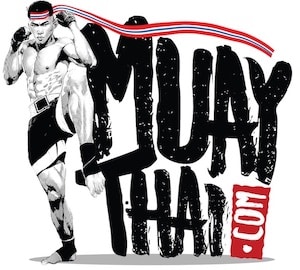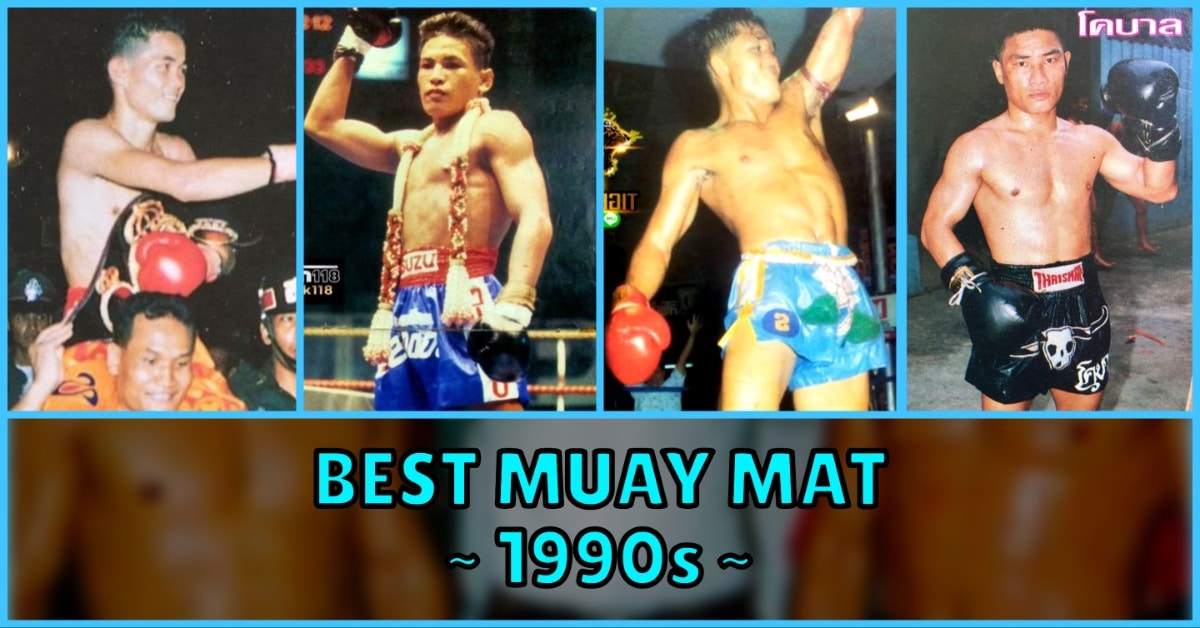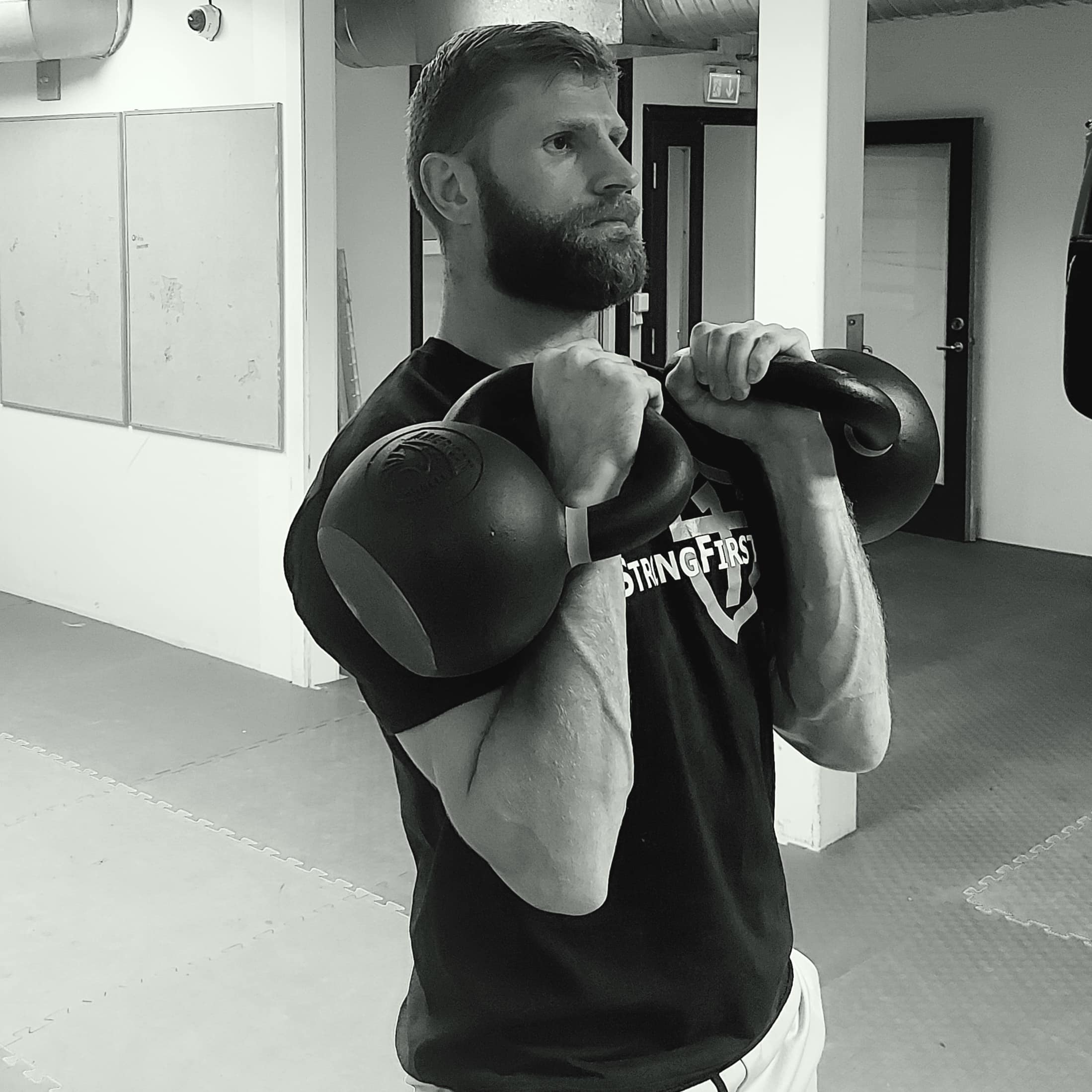Who was the Best Muay Mat in the 1990s?
Are Thai Boxers skilled punchers? A long-standing belief suggests that Thai boxers aren’t skilled punchers and that foreigners like Ramon Dekkers became revered by the Thais for their boxing skills, leading Thais to imitate Dekkers’ style.
However, Dekkers had a negative fight record against Thais, and there were actually many skilled punchers, or “Muay Mat” fighters, in Thailand long before Dekkers arrived on the scene in 1990. In fact, some of the best Muay Mat fighters in history were stadium champions during the 1990s.
Boxing Champions From Thailand
Since the 1960s, Thailand has produced numerous Western Boxing champions including 50 champions within the biggest organisations; WBC, WBA, WBO and IBF.
Some of the best boxing champions from Thailand (pre-2000):
- Pone Kongpetch (WBA, 1963; WBC, 1964)
- Khaosai Galaxy (WBA, 1984)
- Kaokor Galaxy (WBA, 1988)
- Muangchai Kittikasem (IBF, 1989; WBC, 1991)
- Saen Sor Ploenchit (WBA, 1994)
- Saman Sor Jaturong (IBF and WBC, 1995)
- Chatchai Sasakul (WBC, 1997)
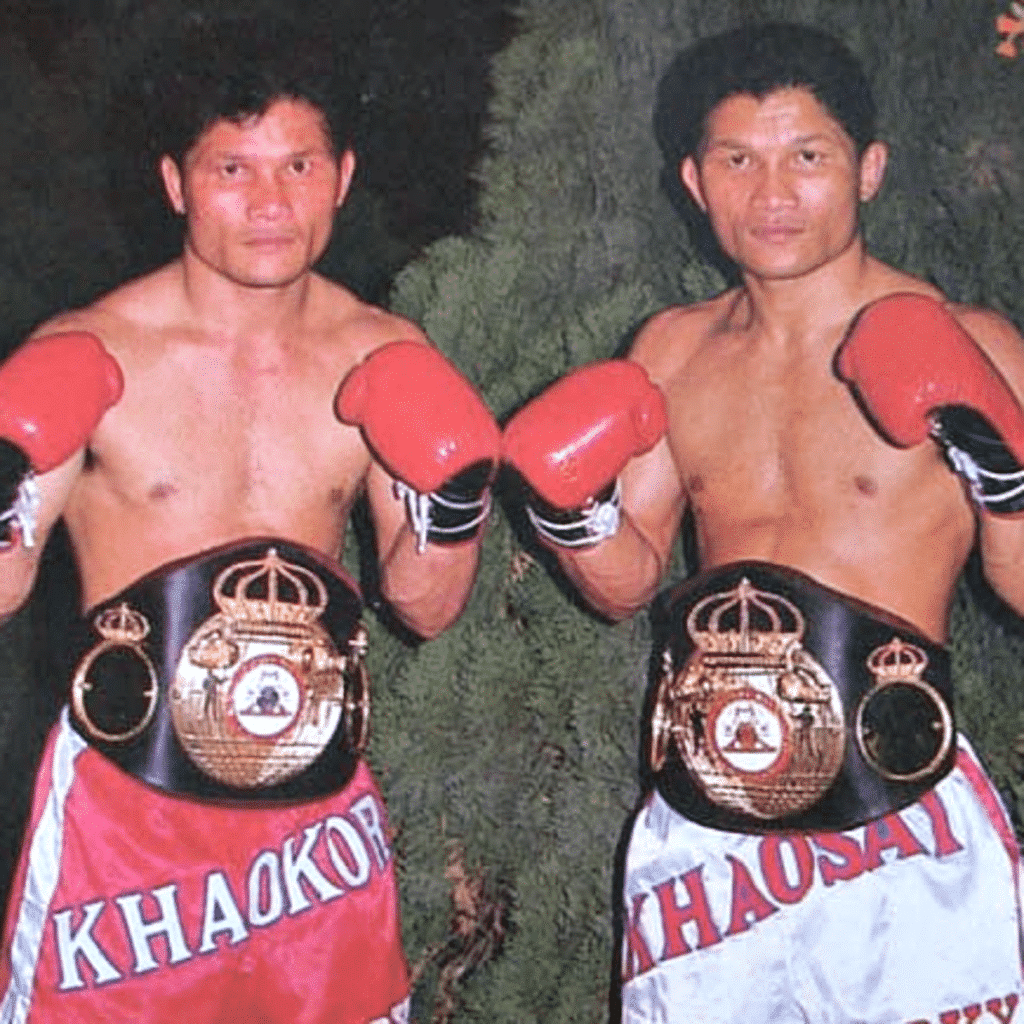
Khaokor Galaxy (left) WBA bantamweight champion 1988 & 1989
Khaosai Galaxy (right) WBA super-flyweight champion (19 defences/16 KOs)
Muay Thai Champions > Boxing Champions
Many Muay Thai champions also transitioned successfully to Western Boxing:
- Samart Payakaroon (Muay Femur), a four-weight Lumpinee Stadium champion, won the WBC Super Bantamweight title in 1986.
- Samson Issan (Muay Bouk/Muay Khao), a champion in both Lumpinee and Rajadamnern Stadiums, won the WBA Super Flyweight title in 1994 and made 38 consecutive defences.
- Veeraphol Sahaprom (Muay Femur), a three-weight Rajadamnern champion, won the WBC Bantamweight title in 1998 and defended it 14 times.
These champions are just a few examples of Thailand’s boxing legacy, with many more deserving recognition.
Anatomy of the Best Muay Mat
To excel as a Muay Mat, fighters must master the art of boxing, encompassing offensive strikes and defensive techniques. This proficiency is essential for navigating the close combat encounters inherent in Muay Thai bouts.
Beyond technical skill, the best Muay Mat fighters possess the courage and readiness to step into their opponent’s range, engaging in combat when necessary. They must strike a delicate balance between aggression and control, seamlessly transitioning between attack and defence to maintain dominance in the ring.
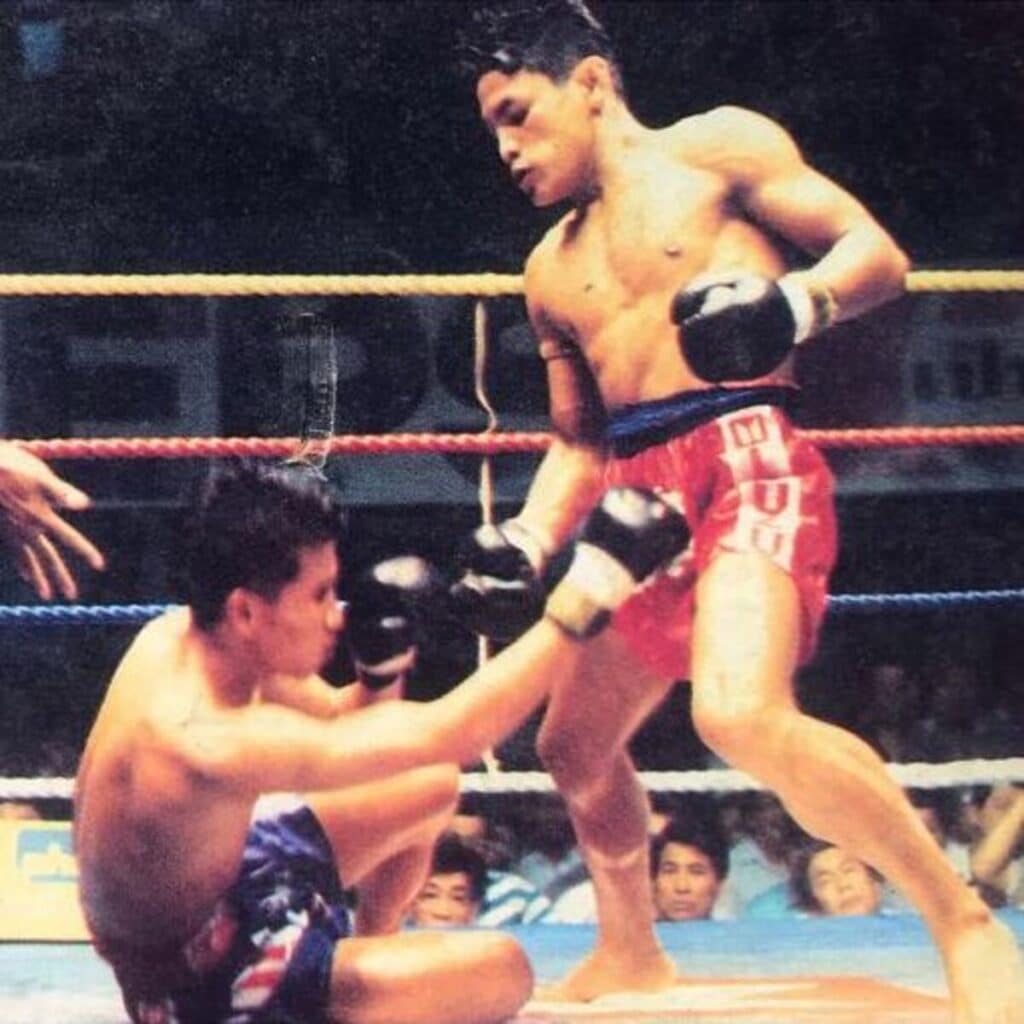
Adaptability and strategic acumen are also critical attributes. The best Muay Mat fighters possess the ability to assess their opponents, identify weaknesses, and adjust their tactics accordingly. This versatility allows them to exploit openings and capitalise on opportunities as they arise throughout the match.
BEST MUAY MAT
~ 1990s ~
This list is just a glimpse into the era’s talent pool. These selections represent a subset of the best Muay Mat fighters who achieved notable title success and were popular with the crowd in Thailand.
หยกไทย ศิษย์ อ. Yokthai Sit Or
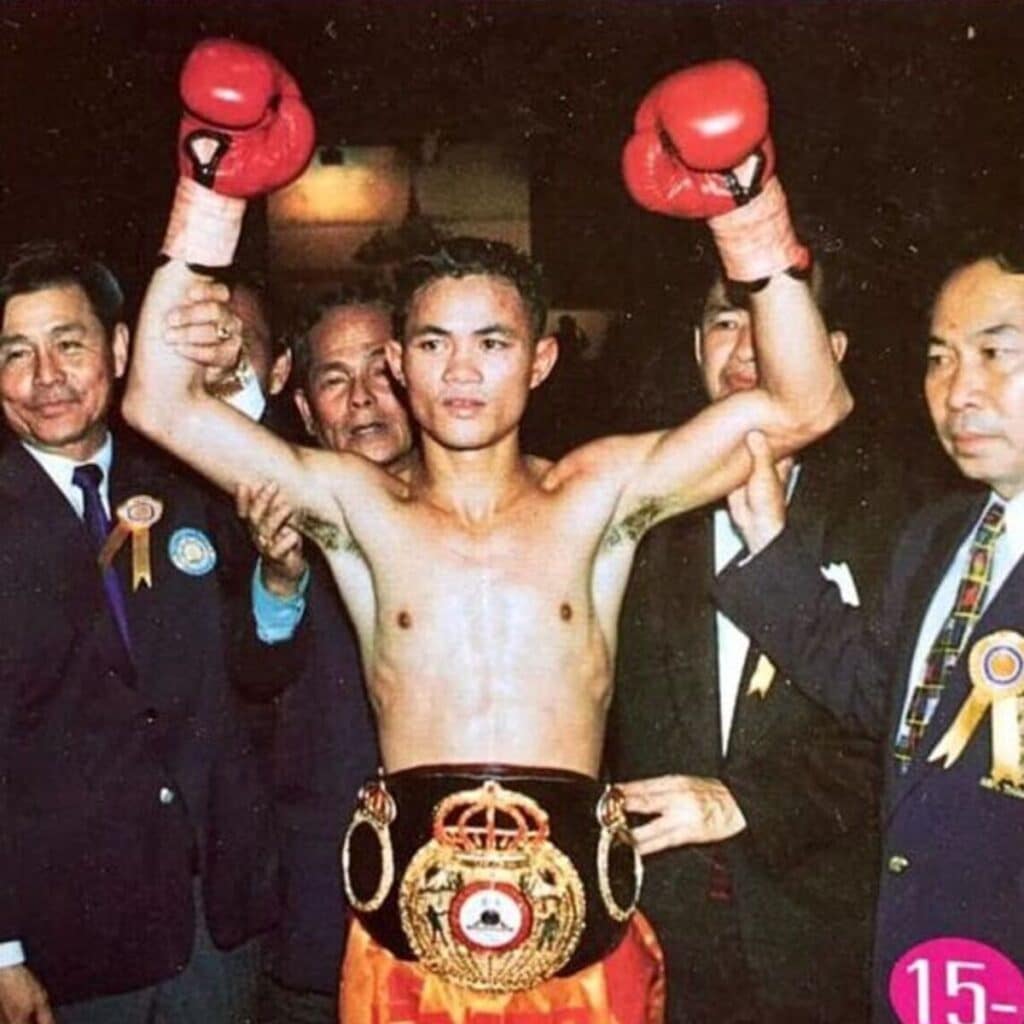
1995 PABA Flyweight Champion (three defences)
1996 WBA World Super Flyweight Champion (four defences)
~ Best Muay Mat 1990s ~
Yokthai was a formidable puncher in the early 1990s, earning the nickname ‘Fist of the Hell Cyclone’ from Thai spectators due to his freakishly powerful punches. In particular, Yokthai’s uppercuts were lethal, proving to be the undoing of Lamnammoon Sor Sumalee in their 1994 bout at Lumpinee Stadium.
After an impressive 1994 which included defeating Muay Femur legend Nungubon Sitlerchai on two occasions and knocking out his other five opponents that year, Yokthai retired from Muay Thai to focus on Western Boxing. He went on to win the PABA Flyweight title in 1995 (three defences) and the WBA World Super Flyweight title in 1996 (four defences).
Yokthai is possibly the best Muay Mat to watch for aggressive, hook- and uppercut-heavy fighting.
Best Year (1994)
7 wins: Rittidet Kerdpayak, Sangmorakot Sor Ploenchit, Kaoponglek Luksuratham, Lamnammoon Sor Sumalee, Nongnarong Luksamrong and Nungubon Sitlerchai (x2).
2 losses: Meechoke Sor Ploenchit and Nongnarong Luksamrong.
โคบาล ลูกเจ้าแม่ไทรทอง Coban Lookchaomaesaitong
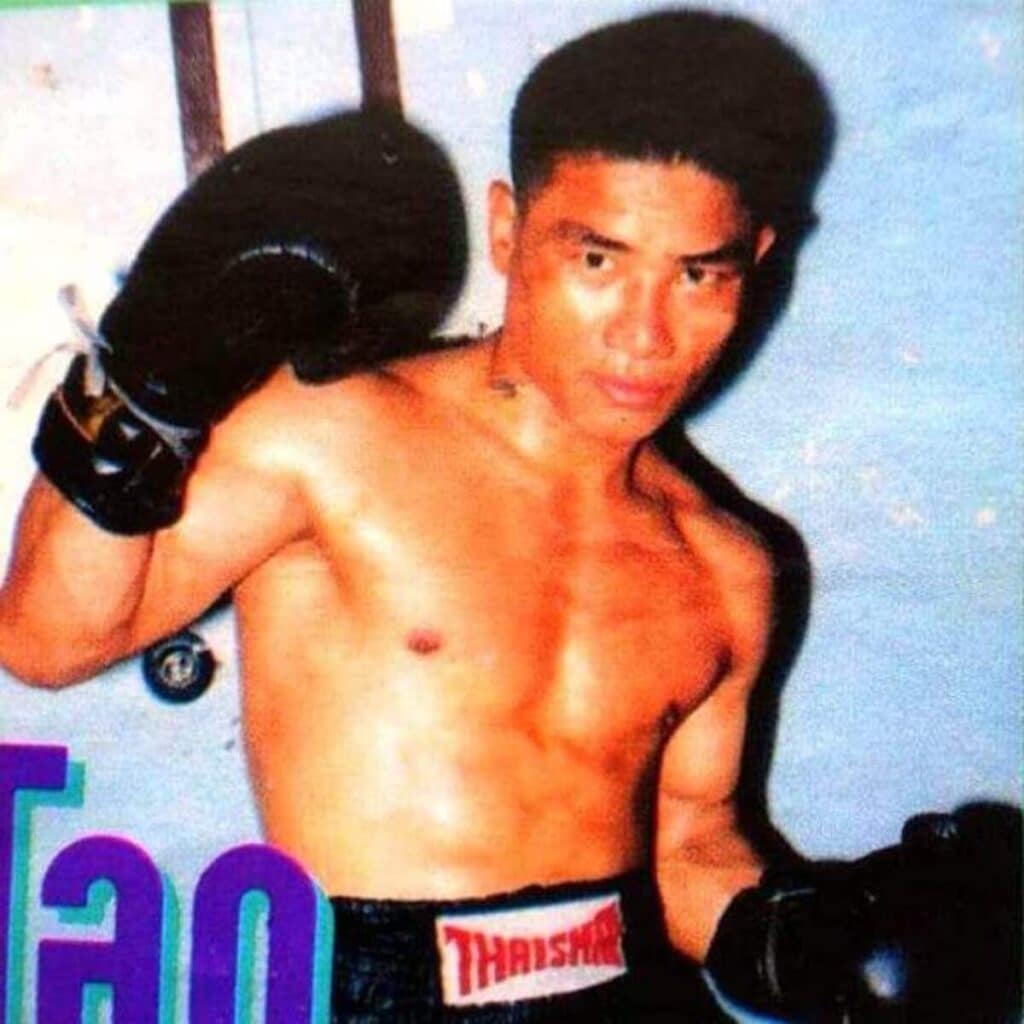
~ Best Muay Mat 1990s ~
Despite being shorter than many of his opponents in the division, Coban compensated with brute strength and devastating KO power. He possessed a strategic mindset, calmly assessing his opponent’s weaknesses and patiently waiting for opportunities to strike with precision.
While adept at opportunistically hunting for knockouts, Coban was also willing to engage in toe-to-toe battles if his opponents sought them, showcasing his versatility as a high IQ Muay Mat.
Coban’s most well-known rivalry was with the Dutch ‘Turbine From Hell,’ Ramon Dekkers, with whom he shared two wins apiece between 1991 and 1993.
Best Year (1991)
9 wins: Noppadet Sor.Samruang, Chombueng Chor.Waikul, Ramon Dekkers, Samransak Muangsurin, Bandong Sitbangprachan, Humphfrey Harrison, Dida Diafat, Chanchai Sor Tamarangsri and Nuenthong Senkiri.
3 losses: Ramon Dekkers, Sakmongkol Sithchuchok and Nongmoon Chomphutong.
หลักหิน วสันตสิทธิ์ Lakhin Wassandasit
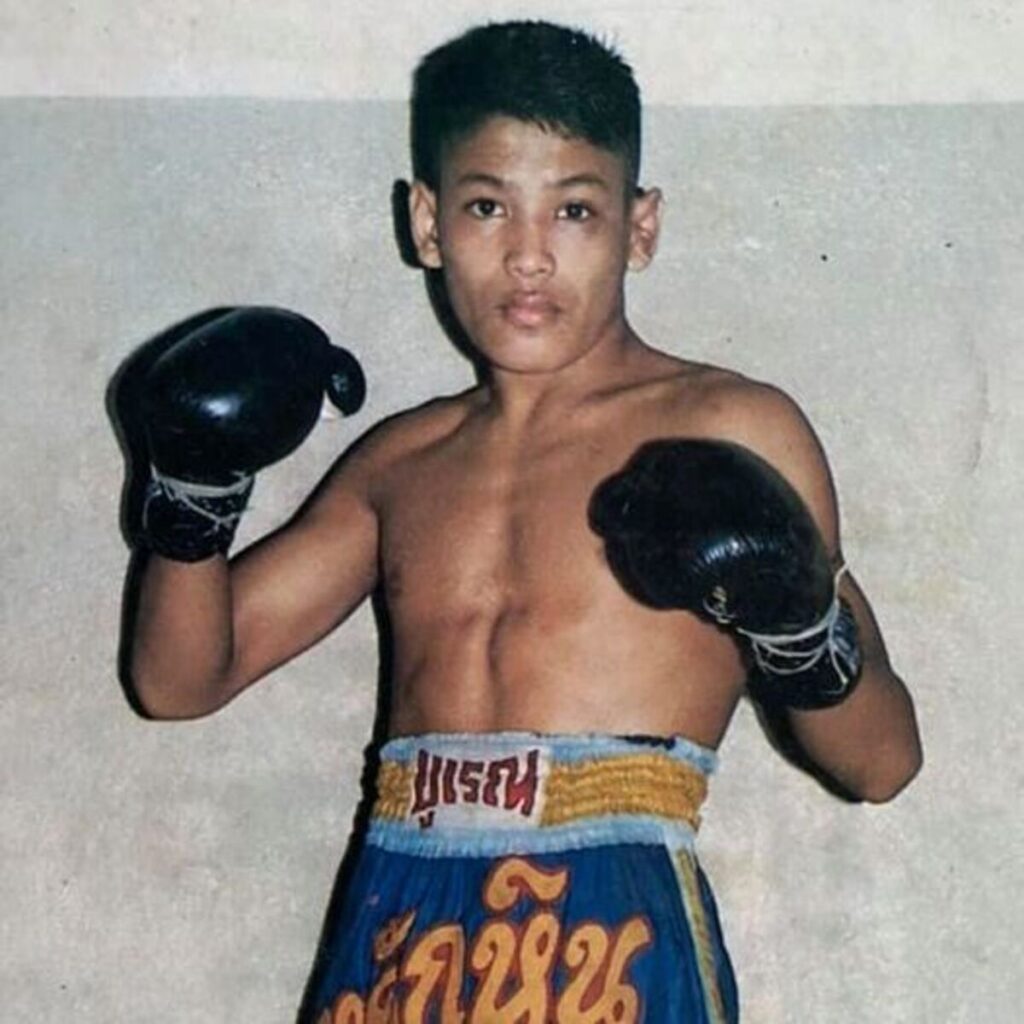
1995 OPBF Bantamweight Title
1996 PABA Bantamweight Title
~ Best Muay Mat 1990s ~
Lakhin was one of the most aggressive punchers of the 1990s, known for capitalising on his incredible strength and power, tightly packed within a 163cm frame. Employing combinations of looping punches, he relentlessly pressed forward, leading to numerous knockouts throughout his career.
Lakhin’s approach earned him the nickname, “Fist of Yama,” a title that not only highlights his physical prowess but also suggests a sense of justice and authority, embodying both his elite fighting abilities and his commanding presence in the ring.
In 1994, Lakhin retired from Muay Thai at the age of 23 to focus on Western Boxing where he went on to win the OPBF Bantamweight Title in 1995 and the PABA Bantamweight Title in 1996.
Best Year (1992)
7 wins: Singnoi Sor Prasatporn, Burklerk Pinsinchai, Chartchainoi Chaorai-Oi, Jaroensak Kiatnakornchon, Samson Isaan, Wicharn Sitsuchon and Tukkatatong Por Pongsawang.
2 losses: Samson Issan (x2)
ซุปเปอร์เล็ก ศรอีสาน Superlek Sorn E-Sarn
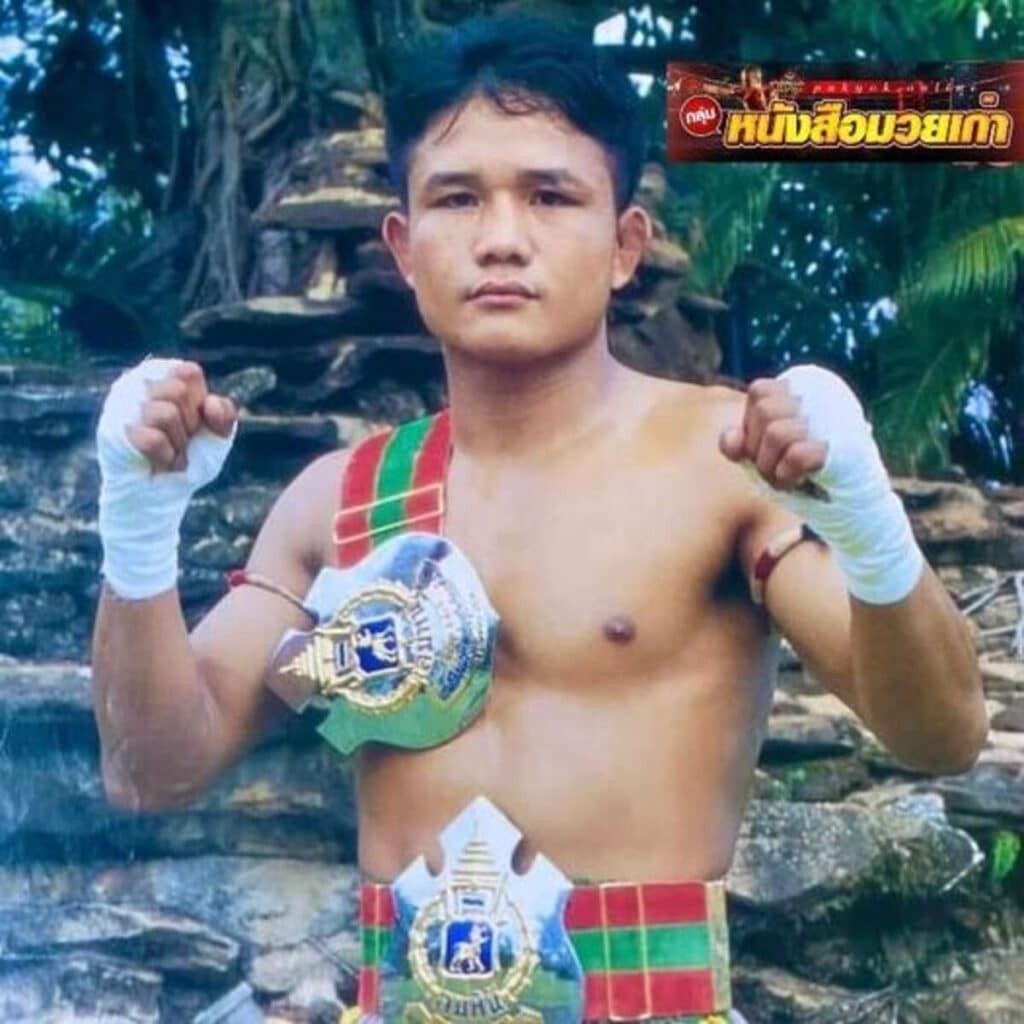
1993 Lumpinee Stadium 126 lbs champion
~ Best Muay Mat 1990s ~
Superlek was a tough, aggressive puncher from Ubon Ratchathani province who acquired the nickname ‘Remote Puncher’ from Bangkok stadium spectators due to his ability to knock his opponents out cold, seemingly at the touch of a button.
Superlek specialised in elbow strikes, which complemented his boxing and provided a strong secondary line of defence. This combination of punches and elbows was particularly effective in close-quarter battles, a common scenario due to his aggressive forward movement. Additionally, he was a powerful low/middle kicker, further diversifying his arsenal.
In 1992, Superlek won five fights by KO and one fight by TKO. His intense exchange of elbows with Nuathoranee Tongracha that same year showcases not only his tidy elbow fighting skills but also his relentlessness in pressing forward despite the barrage of elbows from “The Wild Rhino,” Nuathoranee.
Best Year (1992)
7 wins: Prabphairi Sitprapom, Coban Lookchaomaesaitong, Oley Kiatoneway, Nampon Nongkeepahuyuth, Chandet Sor Prantalay, Cherry Sor Wanich and Nuathoranee Tongracha.
2 losses: Ritthichai Lookchaomaesaitong and Chandet Sor Prantalay.
